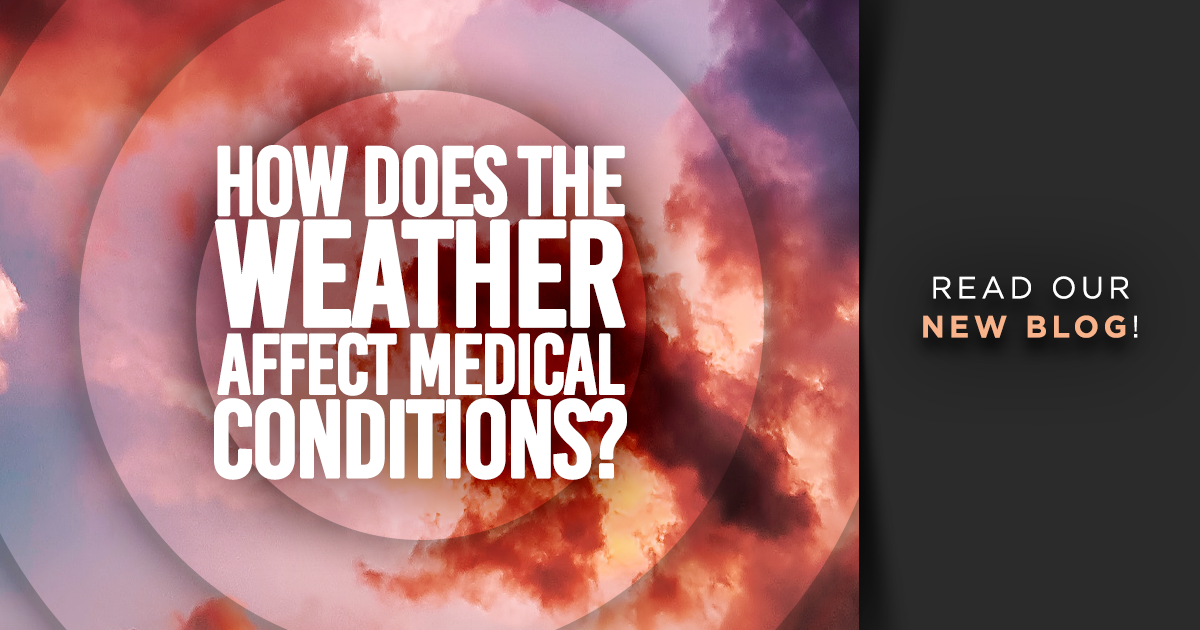
It’s been a wives’ tale for years. Grandmothers across the world have predicted the rain when their joints swell and ache. There have been many studies on the effect of rain on joints, but the weather undeniably affects our bodies. The changes in the weather have been known to impact the human body in both positive and negative ways. How your body reacts will vary from others, but for those with certain disorders, there is no rest from the flare-ups associated with the change in seasons.
Autoimmune Disorders
Autoimmune disorders are when the immune system mistakenly attacks healthy parts of the body. The most common symptom is chronic inflammation that leads to damage of the areas being attacked.
Autoimmune disorders are no stranger to flare-ups, or periods of time when symptoms worsen, with the changing of the weather. The stress caused to the body by being exposed to extreme weather causes the body to work harder than it usually does and can trigger a flare-up.
In the winter, extreme cold can cause cold-induced pain. This is when smaller blood vessels tend to spasm in colder temperatures. The spasms restrict blood flow causing pain, numbness, and discoloration in the extremities. In autoimmune disorders, like lupus, excessive sun exposure can trigger a flare-up, and even a small sunburn can lead to a rash and inflammation.
Skin Conditions

Keeping your skin healthy is a year-round task, especially for those with skin conditions like atopic dermatitis (AD). AD is highly sensitive to extreme weather changes. In the spring and summer months, humidity helps keep the skin moisturized and can bring relief to some symptoms.
Once we’re into the fall and winter seasons, there is much less humidity in the air. Without a natural moisturizer like humidity, it’s essential to keep up with skincare to prevent over-drying of the skin and flare-ups during these seasons. Additionally, AD patches become thicker in the winter months and will bleed when scratched. Adding a humidifier and keeping the skin warm can help during these months.
Mental Health
While some disorders and disease have visible symptoms during the colder months, some can’t be seen. Mental health can suffer, in similar ways in fall and winter. Seasonal affective disorder (SAD), affects about 5% of the US population each year, lasting about 5 months. SAD is a disorder linked to your circadian rhythm, which is almost entirely controlled by light and darkness. In North America, winter months have between 10 to zero hours of sunlight. Because of this, about 5% of the US population experience SAD it in the winter months.
It is important to know the effects of seasonal changes on a range of disorders. At New England Research Associates, we strive to educate in addition to conducting clinical trials. If you or someone you know is interested in participating in clinical research, we are seeking participants for a variety of conditions. Qualified candidates who participate may receive study-related care at no cost and compensation for time and travel. To learn more about these studies and to explore our other research opportunities, click HERE.
References:
https://www.lupus.org/resources/understanding-lupus-environmental-triggers
https://www.lupuscanada.org/2017/11/01/cold-weathers-impact-autoimmune-disease-flares/
